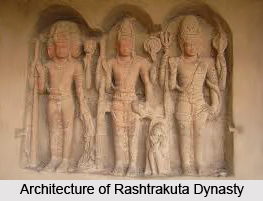 History of Vellore district is interesting and it boasts up its glorious past. The district is strategically located with well-connected bus and rail routes to major towns of the neighbouring states like Karnataka, Andhra Pradesh and Kerala. The district`s history assumes a great significance and relevance, as the glorious past of the place is unfolded. It was under the sway of various dynasties and rulers, the prominent among them being the Pallavas, the Rashtrakuta dynasty of Malkhed, Cholas of Uraiyur, Sambuvarayar, the rulers of Vijayanagarm, Mamathas, the Nawabs of the carnatic and e town through the ages. In the eighteenth century the district of Vellore was the scene of some of the decisive battles fought in Ambur in A.D. 1749, in Arcot in the A.D 1751, and in Vandivasi in the A.D 1760 as a result of the long-drawn struggle between the English and the French for supremacy.
History of Vellore district is interesting and it boasts up its glorious past. The district is strategically located with well-connected bus and rail routes to major towns of the neighbouring states like Karnataka, Andhra Pradesh and Kerala. The district`s history assumes a great significance and relevance, as the glorious past of the place is unfolded. It was under the sway of various dynasties and rulers, the prominent among them being the Pallavas, the Rashtrakuta dynasty of Malkhed, Cholas of Uraiyur, Sambuvarayar, the rulers of Vijayanagarm, Mamathas, the Nawabs of the carnatic and e town through the ages. In the eighteenth century the district of Vellore was the scene of some of the decisive battles fought in Ambur in A.D. 1749, in Arcot in the A.D 1751, and in Vandivasi in the A.D 1760 as a result of the long-drawn struggle between the English and the French for supremacy.
One of the monuments of Vellore is the fort and its actual date of construction could not be established. A very close examination of the stone inscriptions suggests that the fort in all probability might have been erected during the rule of Chinna Bommi Nayak from A.D. 1526 to A.D. 1595. It is one of the most perfect specimens of Military architecture in the southern parts of India. The other note worthy monuments are the Mausoleums located in Aruganthampoodi area on the Vellore-Arcot road, where the family members of Tipu Sultan were buried and the Muthu mandapam on the banks of River Palar, a memorial raised by the Tamil Nadu Government to honor Vikarama Raja Singha, the last Tamil King who ruled Kandy (Sri Lanka) from A.D. 1798 to A.D. 1815. He was imprisoned in Vellore fort for seventeen years.
Role of Vellore in Indian freedom struggle
Vellore District always remained in the fore-front of Indian struggle for independence. In fact, the Sepoy Mutiny of 1806 A.D. which is also known as the Vellore Mutiny of 1806, which broke out inside the Vellore fort against the British authority is considered to be a prelude to the Great Revolt of 1857. It is also described by some historians as the first war of Independence. The spectacular performance of this district in contributing to the military service is commendable, as a large number of men enlisted themselves to the military service, to serve the nation with indomitable sprit and courage. The clock tower in the long Bazaar Vellore was constructed in A.D.1920.
The economic condition of the Vellore district in the earlier stages was not very sound, in the absence of the major industries. But today, there are several industries like Bharat Heavy Electricals Ltd Ranipet, Tamil Nadu Explosives Ltd., Katpadi, etc. There is also a remarkable growth of small scale industries and tanneries in the district. This industrial activity has not only generated employment opportunities, but also contributed to the economic growth of this district. The innovative self help groups of woman are also playing a very useful role in building rural economy and helping rural women to be self reliant in this district of Tamil Nadu. The social scenario of this district has also changed keeping pace with the changing times. Increased social awareness and upward social growth marked the successful story of the district. The bonded labour, the child labour, etc are fast disappearing giving place to new social order. A striking feature of the social change is that the district achieved cent percent literacy.
This district possesses a mixture of great heritage and culture symbolizing the ancient civilization of the Dravidians. Prior to the Dravidians, the Cholas, the Pallavas, the Nayakas and the Marathas ruled Vellore. It once formed the capital of Vijayanagar Empire during 1606 to 1672. In the 17th century, Vellore was depicted as the finest and the strongest fortress in the Carnatic war. In the year 1806, the Vellore Mutiny became one of the earliest revolts against the rule of British in India.



















